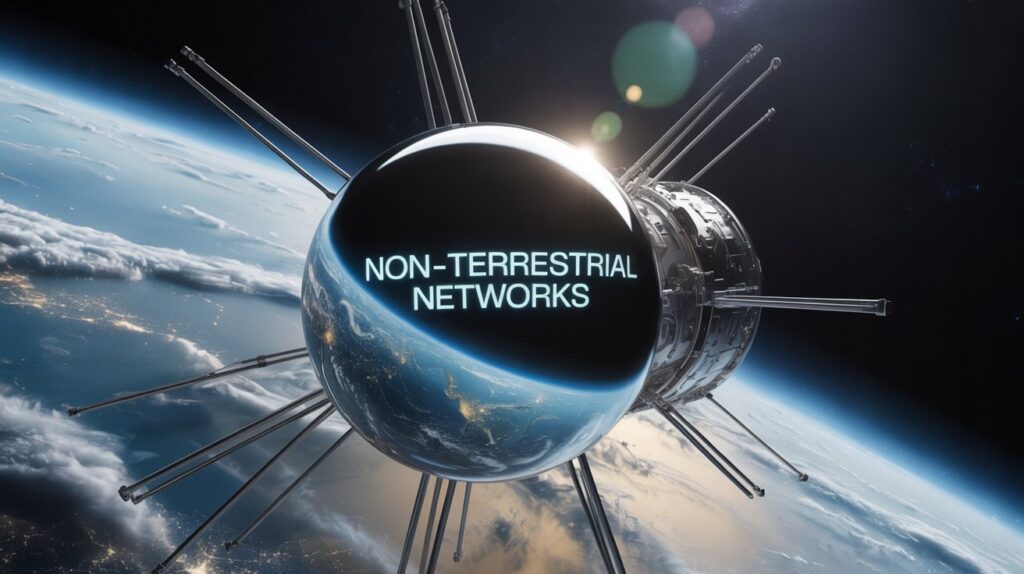In a world increasingly reliant on uninterrupted, high-speed connectivity, Satellite Non-Terrestrial Networks (NTN) combined with 5G New Radio (NR) are reshaping the global communication ecosystem. These advanced technologies bridge the digital divide by extending broadband coverage beyond terrestrial infrastructure into remote, underserved, and mobile environments—including oceans, airspace, and rural terrains.

🚀 The Rise of Satellite NTN: What It Means for Global Connectivity
Satellite NTN refers to integrating satellites and high-altitude platforms into broader communication networks, enabling ubiquitous, resilient, and scalable connectivity. Unlike traditional geostationary systems, modern LEO (Low Earth Orbit) satellite constellations drastically reduce latency and improve data throughput. This makes real-time communication—including video streaming, telemedicine, and autonomous transport—feasible in previously unreachable areas.
Download PDF Brochure @ https://www.marketsandmarkets.com/pdfdownloadNew.asp?id=185084281
By 2030, the Satellite NTN market is expected to exceed USD 2.7 billion, driven by increased demand for real-time global communication, especially in mobility sectors like aviation, maritime, defense, and logistics.
📶 NR Technology: The 5G Standard Behind the NTN Revolution
5G New Radio (NR) is the standardized radio interface under 3GPP that enables seamless integration between terrestrial and non-terrestrial networks. The NR NTN protocol supports satellite platforms and is designed for efficient low-power connectivity, flexible spectrum use, and compatibility with existing 5G infrastructure.
This allows:
- Fast deployment across remote zones
- Extended mobile broadband and massive IoT use cases
- Lower latency and better spectral efficiency
Industries like smart agriculture, remote mining, and disaster response are increasingly adopting NR NTN solutions to stay operational anywhere, anytime.
🌍 Industry Use Cases: Where NTN + NR Is Making an Impact
- Maritime: Real-time navigation, cargo tracking, and ship-to-shore communication
- Aviation: High-speed in-flight connectivity and aircraft diagnostics
- Defense: Tactical data sharing and secure remote operations
- IoT: Rural smart meters, environmental monitoring, and asset tracking
- Emergency Services: Critical communication in disaster-prone or infrastructure-poor regions
The combination of satellite flexibility and NR’s low-latency 5G capability opens the door to applications where traditional mobile networks fail.
🛰️ Innovation Drivers: What’s Accelerating Adoption?
- Reusable Launch Vehicles: Lower satellite deployment costs, increasing accessibility
- Spectrum Flexibility: Dynamic spectrum sharing enables broader use of NTN across services
- Regulatory Support: Policies in regions like North America and Europe foster public-private partnerships
- Private Investment: LEO mega-constellations from companies like SpaceX, OneWeb, and Amazon Kuiper
🇺🇸 Regional Momentum: North America Leads the NTN Charge
The U.S. and Canada are pioneering in NTN adoption due to:
- Early 5G rollouts
- FCC-led spectrum initiatives
- Significant defense and commercial satellite investments
Key telecom players like Verizon and AT&T are collaborating with satellite providers to ensure coast-to-coast, always-on 5G coverage—even in remote zones.
🏢 Leading Companies in the Space
Prominent NTN and NR innovators include:
- Airbus
- Thales Alenia Space
- Analog Devices Inc.
- Kongsberg
- NEC Corporation
These firms are enhancing payload processing, phased-array antennas, and cross-network interoperability to stay ahead in the NTN race.
Ask for Sample Report @ https://www.marketsandmarkets.com/requestsampleNew.asp?id=185084281
🔮 The Road Ahead: Toward a Seamlessly Connected Planet
As 5G matures and NTN infrastructure scales, the vision of a truly borderless, always-connected world is becoming reality. From enhancing global logistics to democratizing internet access, satellite NTN and NR technologies are not just complementing terrestrial networks—they are revolutionizing them.